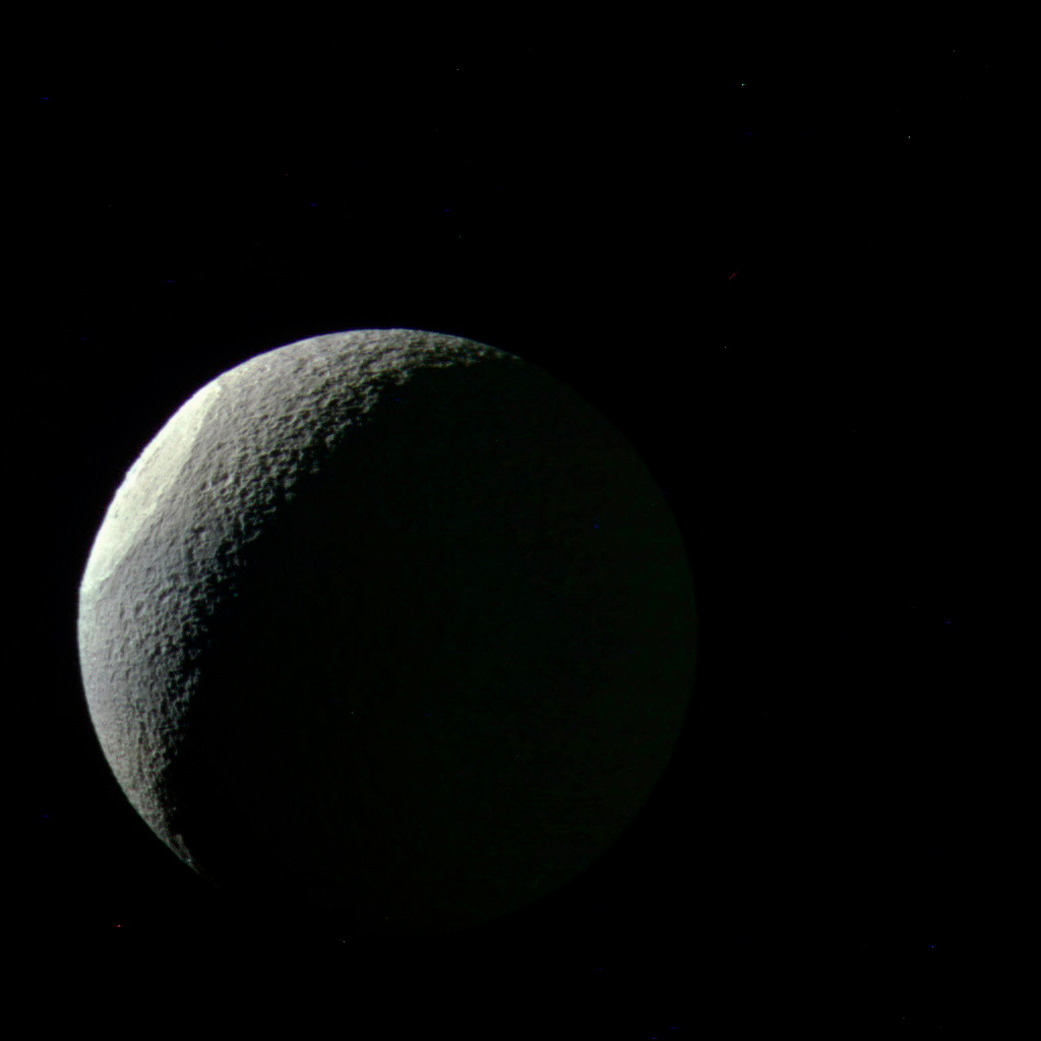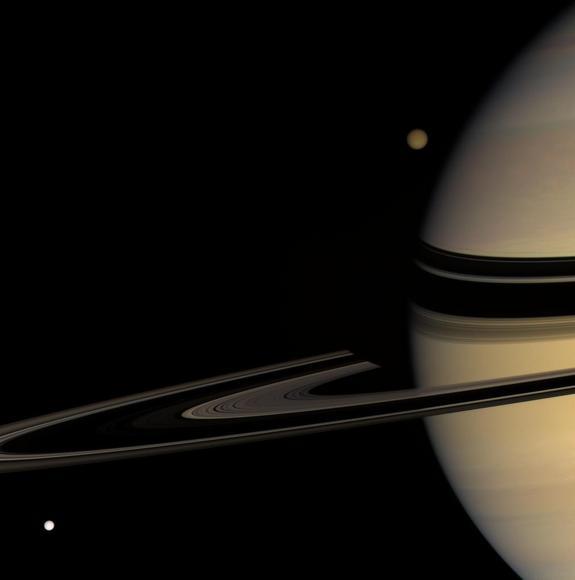
A huge impact crater shines brightly on Saturn's icy moon Tethys in a gorgeous new photo taken by NASA's Cassini spacecraft.
The image highlights an impact basin on Tethys called Odysseus, which, at 280 miles (450 kilometers) across, is nearly half as wide as the Saturn moon itself. (The diameter of Tethys is about 660 miles, or 1,062 km).
The photo shows that Odysseus is considerably brighter than the surrounding landscape.
"This distinct coloration may result from differences in either the composition or structure of the terrain exposed by the giant impact," NASA officials wrote in a description of the image, which was released today (July 27).
Odysseus "is one of the largest impact craters on Saturn's icy moons, and may have significantly altered the geologic history of Tethys," NASA officials added.
Cassini captured the image on May 9, when it was about 186,000 miles (300,000 km) from Tethys. The photo's resolution is about 1.1 miles (1.8 km) per pixel, NASA officials said.
Tethys is the fifth-largest of Saturn's 62 known moons; only Titan, Rhea, Iapetus and Dione are bigger. Tethys, which is composed primarily of water ice, was discovered by the Cassini mission's namesake, Italian astronomer and mathematician Giovanni Domenico Cassini, in 1684.
Get the world’s most fascinating discoveries delivered straight to your inbox.
Odysseus isn't the only outsize feature on Tethys; the satellite also features a 1,240-mile-long (2,000 km) canyon called Ithaca Chasma that's 62 miles (100 km) wide in places.
With more than 60 known moons to go along with its famous rings, Saturn is as intriguing as it is beautiful. How much do you know about the sixth planet from the sun?
Saturn Quiz: How Well Do You Know the Ringed Planet?
The $3.2 billion Cassini-Huygens mission — a collaboration involving NASA, the European Space Agency and the Italian Space Agency — launched in 1997 and arrived in the Saturn system in 2004. In January 2005, the mission's Huygens lander touched down on the surface of Titan, the ringed planet's largest moon.
Cassini will continue circling Saturn and studying the gas giant and its many moons until September 2017. The spacecraft will then end its mission with a bang, performing an intentional death dive into Saturn's thick atmosphere.
Follow Mike Wall on Twitter @michaeldwall and Google+. Follow us @Spacedotcom, Facebook or Google+. Originally published on Space.com.





